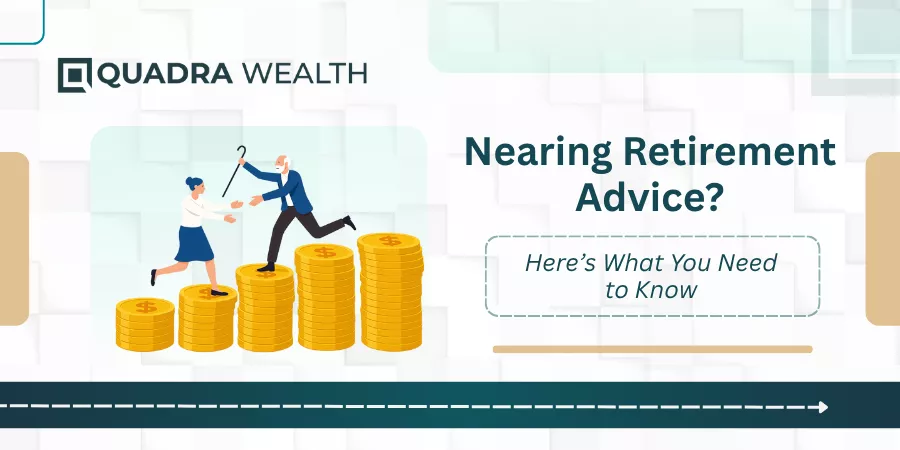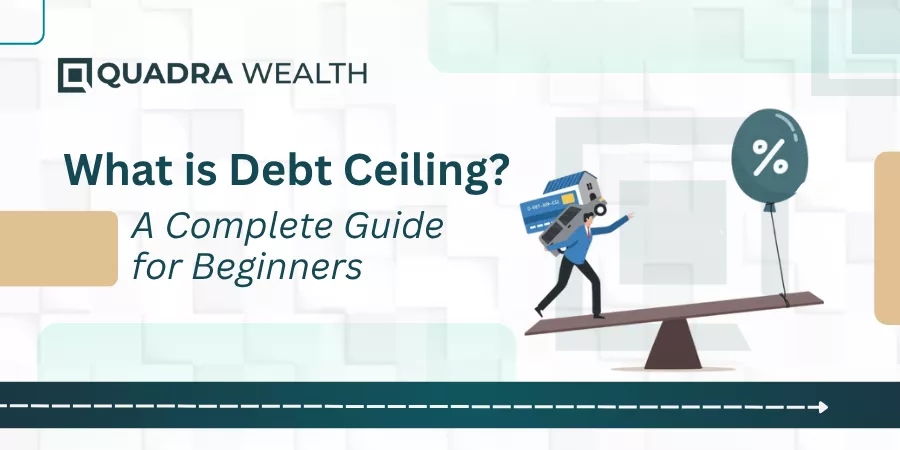Introduction
As you see a lot of floating investment options in the world, here comes the pondering question, “Which is the best form of investment for me?’ Long-term bonds imply that you may have to wait for 10-25 years to retrieve your investment money while equities put you through rising or falling shares or securities via volatile market conditions.
Here is why you need flexible investing options like structured notes. These notes combine debt and equity with customization levels applied at all stages of the note curation. That primarily explains why these notes are gaining more popularity.
In this blog, let us take a deeper dive into Are structured notes debt instruments are and how they perform in the marketplace.
Structured notes are hybrid investments with a debt component and the notes are also linked to different asset classes. The asset can take the form of a share or a basket of shares. Options, futures, indices or currencies can also be underlying assets that can be linked to structured notes.
Therefore, you can clearly say that a structured note is a debt instrument with a derivative option added or linked to it. It is a combination of debt and asset allocation inside the same investment portfolio.
Are structured notes debt instruments?
As you find the structured note is a debt obligation with a derivative embedded in it, this is a form of investment that performs little differently from how fixed bonds or equities may work.
This is a note that mitigates losses and gains for the investor by optimal utilization of debt funds as well as underlying equity assets. Here, the performance of the underlying value of the asset and the debt obligation are monitored by the product issuing company.
Therefore, the note works by giving downside protection to investor’s capital funds while also linking potential returns to the performance of underlying assets that the notes are linked to.
Investment holders receive coupons, interest earnings, or dividend disbursements on the whole. Therefore, investors get multiple channels of income and they can also diversify their investment allocation with debt and equity. This income and investment diversification can grow their portfolios in the long run.
In a nutshell, the note is a type of investment wherein the investor can never determine the potential returns on the note until the time of maturity.
Understanding the components of structured notes
As has already been said, a structured note comprises a debt component or a debt obligation that is embedded in the derivative.
A debt fund can take the form of fixed deposits, CDs, credit notes, bonds, or mortgage loans that are treated as fixed-income securities.
The notes are linked to underlying equity assets as well. The asset allocation comprises equity shares, commodities, market indices, and currencies to name a few.
The underlying performance of the linked-in asset promotes the potential earning capabilities of investors. Investors can also receive fixed-income coupons or interest earnings on products deemed to provide the above.
The cumulative effect of the debt element and the embedded derivative that underlies the note is how a structured note operates in the world of investments.
Therefore structured notes are debt instruments with derivatives embedded into them.
How do we gauge performance and capital protection in structured notes?
The performance of the note is linked to the returns of an underlying asset. Here, the derivative performance can be linked to the underlying asset, group of assets, or index values.
You may have also noticed how structured notes work using an optimal mix of debt and equity. In other words, it is the bond component that makes up most of the investment in structured notes. This is where the note provides capital protection to investors.
On the other hand, asset allocation improves the overall return on the investment as the potential gains the underlying assets earn during the term of the investment are added as interest earnings, coupons, dividends, and other lucrative sources of income.
In other words, the potential gains of notes depend on the performance of the underlying assets these notes are linked.
The derivative component can allow investors to have exposure to different forms of asset classes. The asset allocation has equities, shares, commodities, futures, options, currencies, fixed-income securities, and real estate.
Principal-protected notes, leveraged notes like ETFs, and reverse convertible notes are common examples of structured notes.
Advantages of structured notes
1. Highly customizable
The structured notes are highly customizable and it is the flexibility or customization that adds value to this particular portfolio.
Investment bankers appoint dedicated advisors or relationship managers who may perform the risk-tolerance levels for every individual investor. The risk-handling capacities differ from one investor to another.
Once the risk profiling is done, the investor further discusses what the underliers are concerning the notes. He sits with the investment banker to further discuss the term of investment and also decides the expected rates of return the investing portfolio must earn upon maturity of the investment.
Therefore, the investor can have the portfolio tailor-made to suit his financial objectives
2. Versatility
As an investor, you have the potential to receive income from multiple streams. The asset class may perform well or drop down in the equity market. However, the bond component offers downside protection to investors by mitigating excessive losses the portfolio may make under adverse market scenarios.
At the same time, as the note comprises an optimal mix of debt and equity, these notes are safer havens to invest as compared to direct investments of the same order in blue-chip companies.
Investors may only lose a portion of their capital while they may have received interest coupons, dividends, and potential gains from the performance of underlying assets that notes are linked to.
3. Limits losses against gains
The structured notes provide downside protection against the investor’s capital or principal investment. Irrespective of whether you earn phenomenal returns on your investments, you can at least safeguard yourself from unforeseen losses.
Say, for instance, if an underlying asset is capped with a barrier protection of 15%, capital is protected by the said percentage. This is a better option as compared to direct investment portfolios that do not have any kind of capital protection against poorly performing equities.
In a nutshell, these notes do not behave like traditional bonds or fixed-income securities. An investment adviser can help you get clear ideas on specific investment options of structured notes based on market trends or client-based testimonials.
Downsides of structured notes
Let us have a look into some of the pertinent disadvantages or risk factors that are connected with structured notes!
1. Complex investment option
Structured notes are quite complicated to understand for newbies or less experienced investors. This is because of the derivative component that is combined with other financial instruments.
For instance, take commodities, futures, or options. The investor may need a thorough knowledge of how each component behaves under specific market conditions. The investor must therefore understand what their implications are.
As structured products are a mix of debt and derivative, the instrument is a little complex for a novice trader to understand. The structured note’s actual payoffs also cannot be determined that easily.
2. Market risk
Structured notes are also accessible to market risks like any other form of investment. Some of the notes are principal protection. For those structured notes that do not have principal protection, the investor can lose a portion of or the entire capital investment.
Potential losses are unforeseen when the underlying derivatives act highly volatile in the market. The note has its bearing via interest rates, equities, foreign exchange currencies, or commodity prices. And, this is not just one component that we are talking about here.
3. Low level of liquidity
Structured notes cannot be easily gotten rid of in case of unforeseen emergencies or dripping prices of derivatives. The customized notes are not duplicated elsewhere. Therefore, it is difficult for product issuers to help you find suitable buyers for your notes.
Therefore, you may have to hold these notes until they mature. Investors must exercise great care and caution while they invest in any type of structured notes.
4. Default risks
You may also have the risk of witnessing the product issuers get busted. This risk is more phenomenal over debts or derivatives the notes are linked to.
Take the example of Lehman Brothers. When the firm collapsed and issued its insolvency during the year 2008, all its structured notes were rendered worthless. This means the entire value of the investment could be lost.
You can buy US treasury bonds separately from the Govt and you can deal with options separately. This way, you would be protected from default risks most of the time.
How structured notes perform
- Structured products combine debt and equity. While the debt component provides downside protection to investors, the equity underlies the structure of notes. The performance of underlying assets that the notes are linked to is the primary factor in deciding the return on investment on this investment portfolio.
- The structured notes are neither too risky nor are they completely risk-free. Like any other form of investment, these notes have a whole fleet of credit, market, and liquidity risks to name a few. Investors must therefore read initial offer documents or screening documents thoroughly before investing in structured products.
- Investors must understand that potential returns on notes are also not fixed in nature. You may receive interest earnings, coupons, dividends, or equity conversion options based on what you had signed up for while the notes were designed under your name. In a crux, structured notes may offer different sources of income and are not restricted to a single source of income.
- You must also understand primary tax implications so that you exactly determine how your cash holdings remain after receiving the principal and interest earnings. Getting legal or investment-based advice or guidance from a tax advisor can keep you in better stead than being non-knowledgeable about this particular financial product.
- Structured notes allow performance-based returns and not static returns on the investment. In other words, the notes offer variable returns and not fixed income returns. The notes may have a call option or put options if you deal with futures.
- You must understand the volatility of the stock market to further analyze the risks associated as the note matures. This holds good even if the issuance of notes is done by reputable investment houses.
The Bottom Line
Structured notes are complicated forms of investment vehicles that require thorough knowledge and understanding on the part of investors who want to purchase notes.
As you have a debt obligation and a derivative, you must understand how both these components work hand-in-hand.
Although banks were issuing notes to more sophisticated investors who were dealing with hedge funds and institutional investors, these notes are now opening their doors to retail investors across the US. However, you must weigh the pros and cons of other investment plans before you can commit to structured products.
Investors must read market offer letters carefully before signing on dotted lines.






